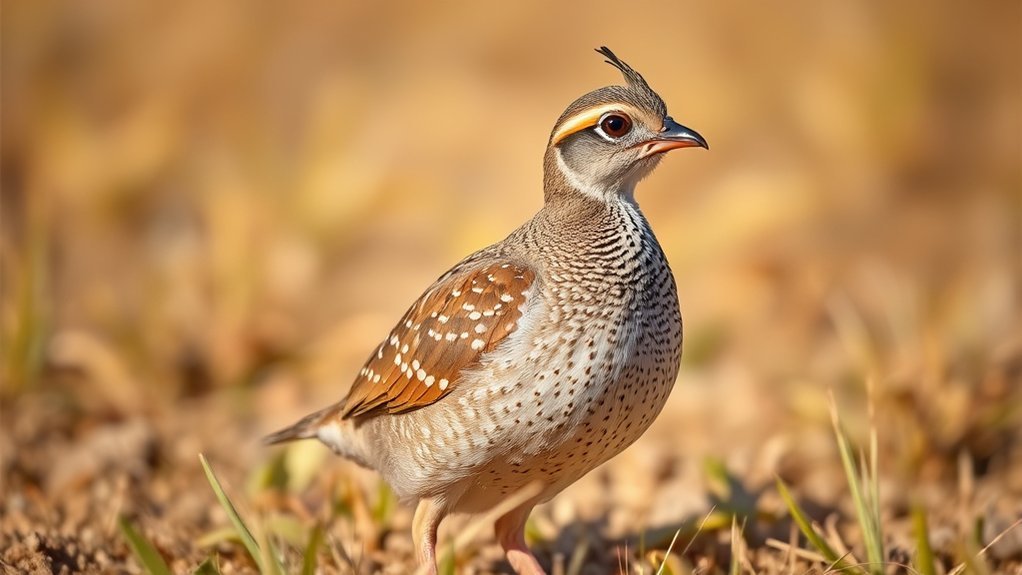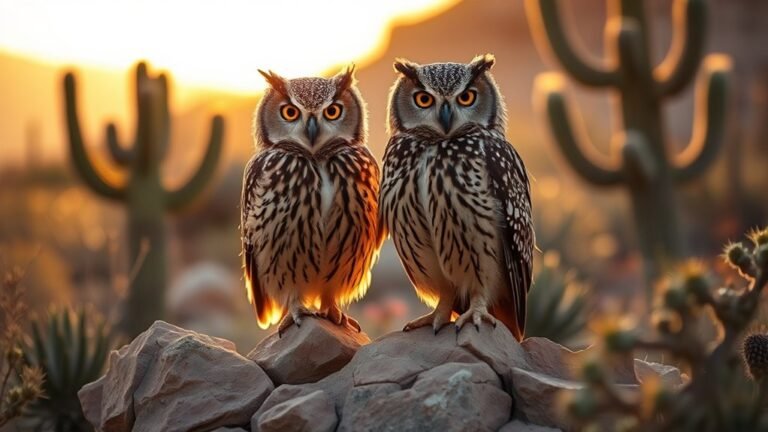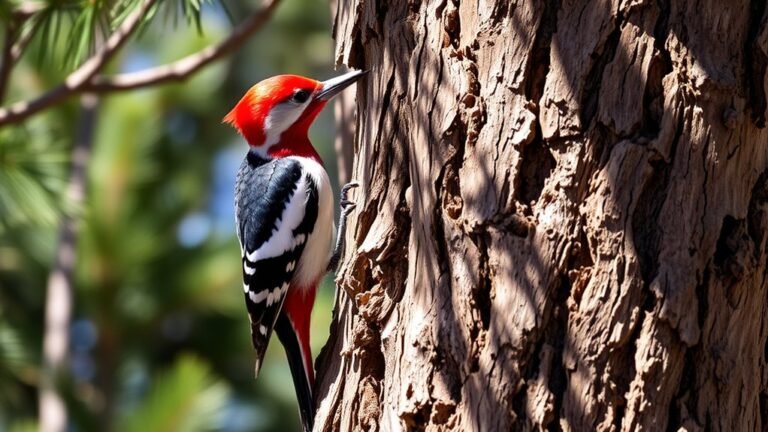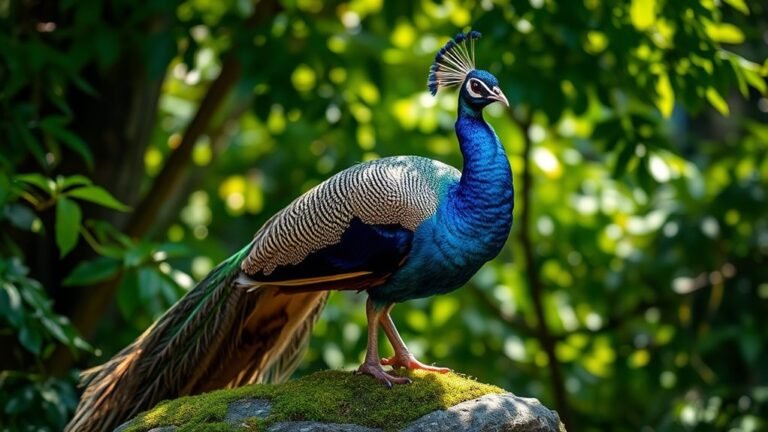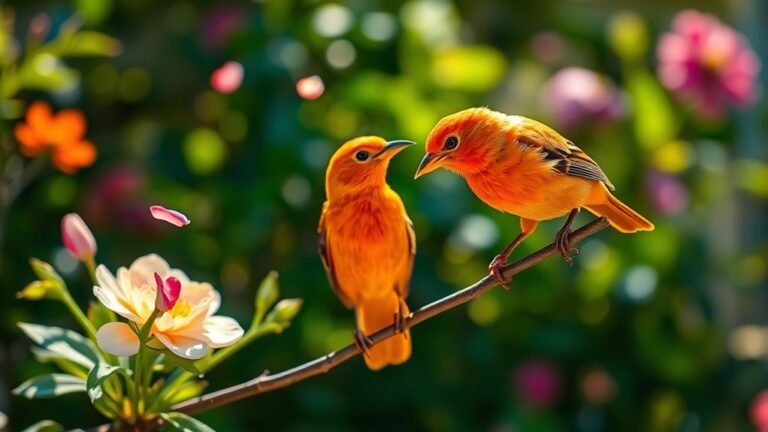Identifying Female Quail: Key Features
When you look at female quail, you can see some clear differences from male quail. They have bigger, rounder bodies. Their feathers are soft and come in earthy colors with gentle patterns.
You can also hear their sounds. Female quail often make soft coos and whistles. These sounds show how they act and interact with others.
But there's more to know! Learning where they like to live and how they behave helps you identify them better. What special things might you find about their traits?
A Quick Overview
Female quail are unique birds that have some very noticeable features.
First, they have softer feather colors, mostly in browns, tans, and grays. This helps them blend in with their surroundings and stay safe from predators.
Next, female quail are usually larger than males. They have a wider and rounder body shape. This shape is great for helping them lay eggs comfortably.
When it comes to their feathers, females have special patterns. You might see bold lines and soft spots in earthy tones. These patterns can change depending on the species of quail.
Female quail also communicate using different sounds. They make soft coos and sharper whistles. These sounds help them talk to each other and warn about danger.
In their daily life, female quail build nests where they lay their eggs. They like to forage for food in small groups. Also, they spend time preening their feathers to keep them clean and healthy.
Overall, female quail have many interesting traits that help them survive and thrive in nature!
Plumage Coloration

When we look at female quail, their feather colors help us tell them apart from males.
Females usually wear softer, quieter colors like browns, tans, and grays. These earthy tones help them blend in with their surroundings and stay safe.
Their feathers are often rounded and fluffy, which adds to their gentle look.
Sometimes, you might see some light streaks or spots, depending on the type of quail. These small details can help us know which quail we're looking at.
By paying attention to their colors and patterns, we can learn more about how these birds adapt to their homes and behaviors.
It's a fun way to connect with quail and enjoy the beauty of nature.
Size and Body Structure
Female quail are easy to spot because they look and act a bit different from the males. First, they're usually a bit bigger. This means they've a wider body and more volume. You can see this especially when you look at their shape.
Female quail have rounder bodies, which helps them lay eggs. Their tails are shorter and more compact compared to male quail, and their necks are thicker.
These differences make it easier to tell the females apart from the males. When you're watching quail in nature, look for these features. They'll help you identify female quail quickly and make your experience more fun!
Distinctive Markings
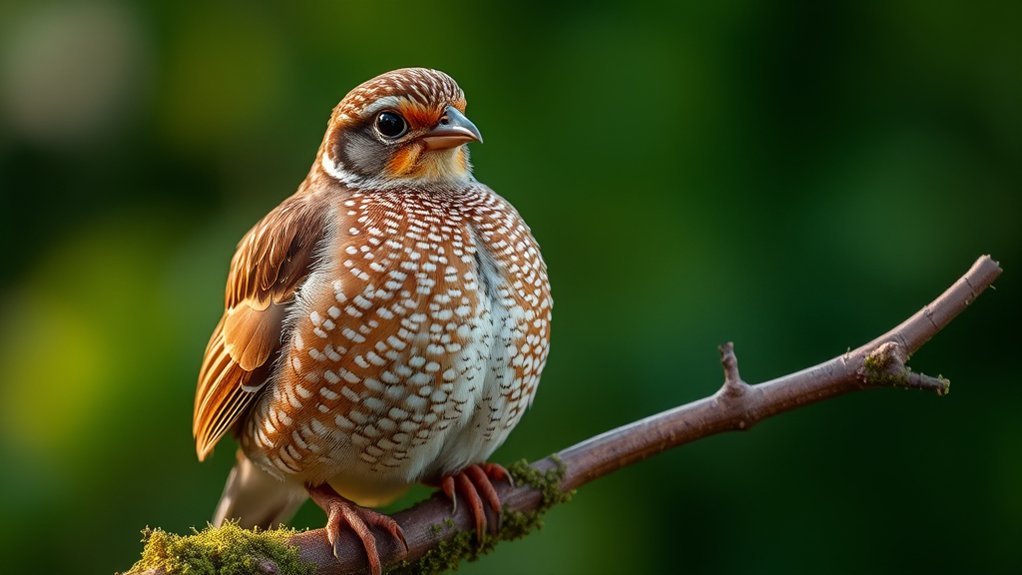
Female quail can be bigger than male quail, but their unique markings help tell them apart.
Female quail often have beautiful feather patterns. You might see bold lines and soft spots in their feathers. They usually show a mix of browns, tans, and whites, which helps them blend into their surroundings.
Some female quail have bright colors, while others have soft, earthy tones. If you look closely, you can spot different patterns on their necks and wings.
These patterns can change depending on the quail species. Getting to know these special traits can deepen your connection to these amazing birds. It's fun to notice their differences as you watch them in the wild!
Vocalizations and Calls
Female quail have special ways of talking to each other. They make different sounds that help them communicate and interact with their friends. These sounds include soft coos and sharper whistles. Each sound has a purpose. For example, some calls help attract a mate, while others warn the group of danger.
The way they call can change based on how they feel or what's happening around them. If you hear a high-pitched call, the quail might be feeling anxious or stressed. A lower sound usually means they're calm, especially when they're sitting on their nests.
Listening to these calls is important. They show how quail connect with each other and stay together as a group. By paying attention to these sounds, you can learn more about how quail live and interact with each other. It's a fascinating part of their social life!
Behavior and Habits
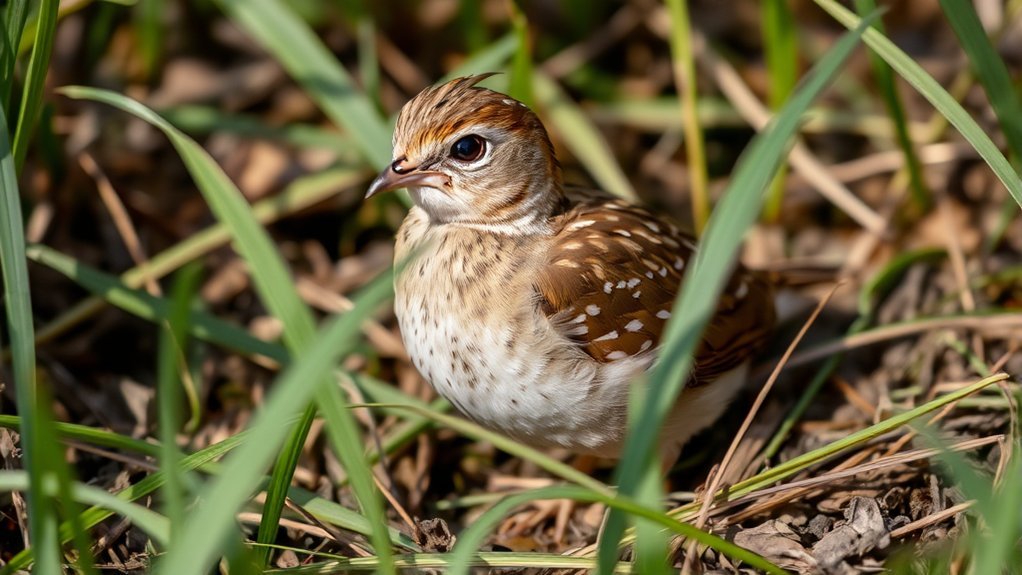
When you watch female quail, you'll see many interesting behaviors that help them live and interact with each other. One of the most important things they do is build nests. They like to find hidden spots to keep their eggs safe.
Female quail also have social habits that are important for their everyday life. Here are some key behaviors:
- They form small groups, or flocks, to stay safe and find food together.
- They preen their feathers. This helps keep their feathers in good shape and shows other quail that they're healthy.
- They enjoy dust baths to get rid of bugs and keep clean.
- During breeding season, they perform special dances to attract mates.
- They usually forage for food in the early morning or late afternoon to avoid the hot sun.
These behaviors show how quail use their instincts and adjust to their surroundings. This helps them thrive in their habitats.
Watching these activities can be both educational and fun!
Habitat Preferences
Female quail like to live in places where they can find good food and hiding spots. They enjoy habitats such as grasslands, brushy edges, and areas with lots of shrubs. These places have many native plants that help them stay safe and provide meals.
You will often see quail near nesting sites where they can lay their eggs and stay hidden from predators. The right weather is important for them too. They prefer areas with warm temperatures and enough rain, which helps insects and seeds grow.
If you want to spot these birds in nature, knowing where they like to live can help a lot. This makes it easier to enjoy watching them and connecting with the natural world.
Frequently Asked Questions
What Is the Lifespan of Female Quail in the Wild?
In the wild, female quail usually live for about 1 to 2 years. Their lives can be shaped by many things. The area where they live, the food they can find, and the dangers from predators really matter for their survival. Good conditions can help them live longer, while challenges can shorten their lives.
Do Female Quail Have Specific Predators?
Female quail have to watch out for different predators. Hawks and foxes are two of their main enemies. To stay safe, quail use tricks like blending in with their surroundings and moving quickly. These skills help them dodge threats and survive in the wild.
How Do Female Quail Care for Their Young?
Female quail take great care of their chicks. They often lead their young away from nests after they hatch. When they build nests, they choose spots with thick plants. This helps keep the eggs safe from predators and keeps the chicks warm during the early days of their lives. Quail moms really watch over their babies, making sure they are safe and sound. It's a tough job, but they do it well!
What Do Female Quail Eat in Their Natural Habitat?
Female quail eat seeds, insects, and leaves in their natural habitat. They like to forage for food on the ground. Their diet changes with the seasons, which helps them find tasty food all year round.
In spring and summer, female quail enjoy fresh green plants and lots of bugs. During fall and winter, they eat more seeds and grains since those foods are easier to find.
Quail are great at adapting to different environments. They make sure to eat what is available to stay healthy and strong. If you see quail in the wild, look for them scratching around in the dirt. You might spot them searching for their next meal!
Are Female Quail Migratory or Sedentary?
Female quail usually stay in one place. They like to live in stable areas and do not migrate a lot. Their movement is mostly based on local weather or food availability. This helps them do well in the homes they choose.

Luna is the passionate founder and author of Birds and You, a website dedicated to sharing her love for birds with fellow enthusiasts. Through her engaging articles and guides, she aims to educate and inspire others to explore the fascinating world of birds. When she’s not writing, you can find Luna observing birds in their natural habitats or sharing beautiful bird photography on Pinterest. Join her on this journey to celebrate and protect our feathered friends!

